Have you ever considered taking a trip to Jordan? Zoomer’s Colleen Nicholson has you covered with seven of the most incredible sights this magical country has to offer.
Jordan first captured my imagination through the movies – Petra, home of the Holy Grail in Indiana Jones and the Last Crusade, and Wadi Rum, whose vast red sands served as a stand-in for Mars, home of “astronaut” Matt Damon using his feces to grow potatoes in The Martian. (“Spoiler” alert, indeed.) Hollywood might be mostly smoke and mirrors, but I was delighted to discover that magic was alive and well in Jordan. Go to check the wonder of Petra off your extraordinary-sites list, but stay for these six other (darn good) reasons.
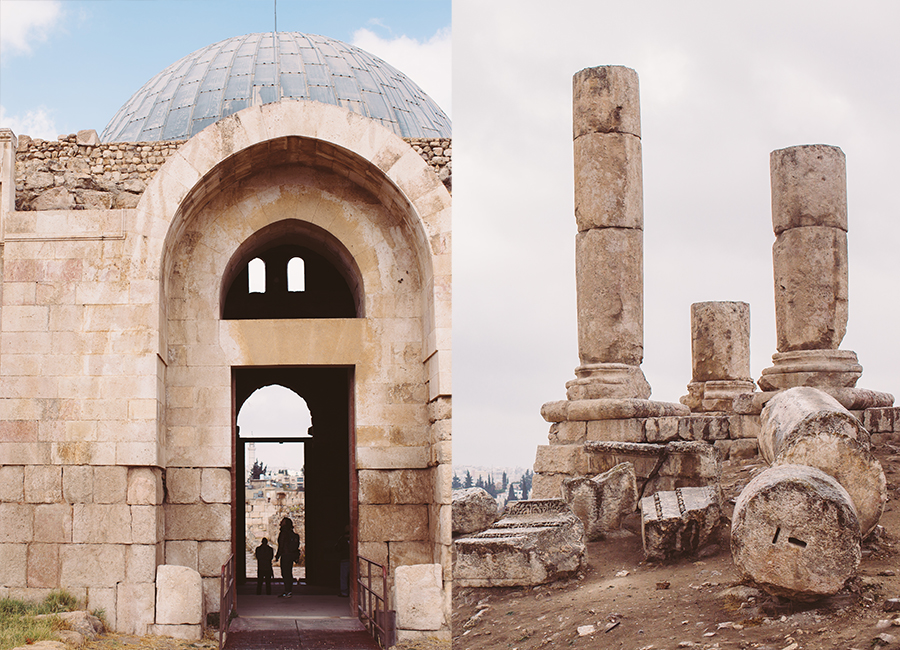
Amman
At the temple of Hercules on Citadel Hill, have a look for the remaining three fingers of the Roman hero. A partial hand and elbow are all that’s left of what was believed to have been an impressive 40ish-foot statue, thought to be disseminated by earthquakes and lost over time.
The pieces are worth finding for their astonishing scale and the bounty of “hand of God” puns at your fingertips – see what I did there? – to annoy and amuse your travel companions. Near these fragments, the Jordan Archaeological Museum houses a collection of artifacts from sites across the country.
Venture a little further south to test the acoustics of Amman’s glorious Roman amphitheaters, and then head west to the frenetic fruit and vegetable market (or Souk el-Khodra) behind the Grand Husseini Mosque for a tasty sample of locally grown produce and bustling modern-day Amman.
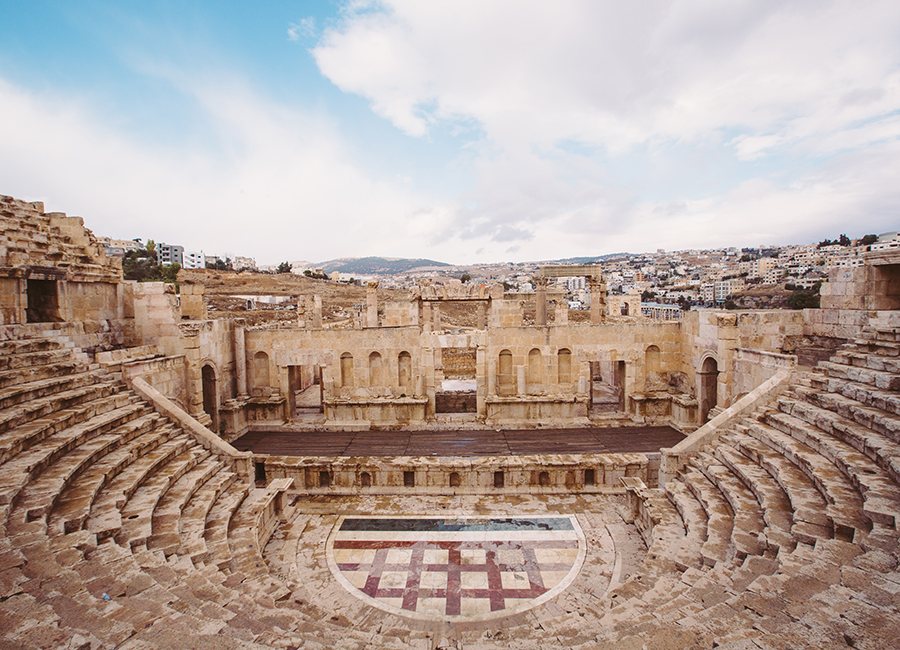
Jerash
It might be the gentle nonchalantness of Jerash that surprises me the most. As at so many of the country’s spectacular attractions, residents stroll casually past gaping tourists. As one of Jordan’s biggest archaeological draws, those seeking a window into the past will find it here at the “largest and best preserved Roman ruins outside of Italy,” a.k.a. “Rome outside of Rome,” just 45 minutes north of Amman. The ruins uncovered at Jerash typify a glorious, busy city with colonnaded streets, public fountains, theaters, markets, grand temples, two amphitheaters and a hippodrome (for chariot races, natch).
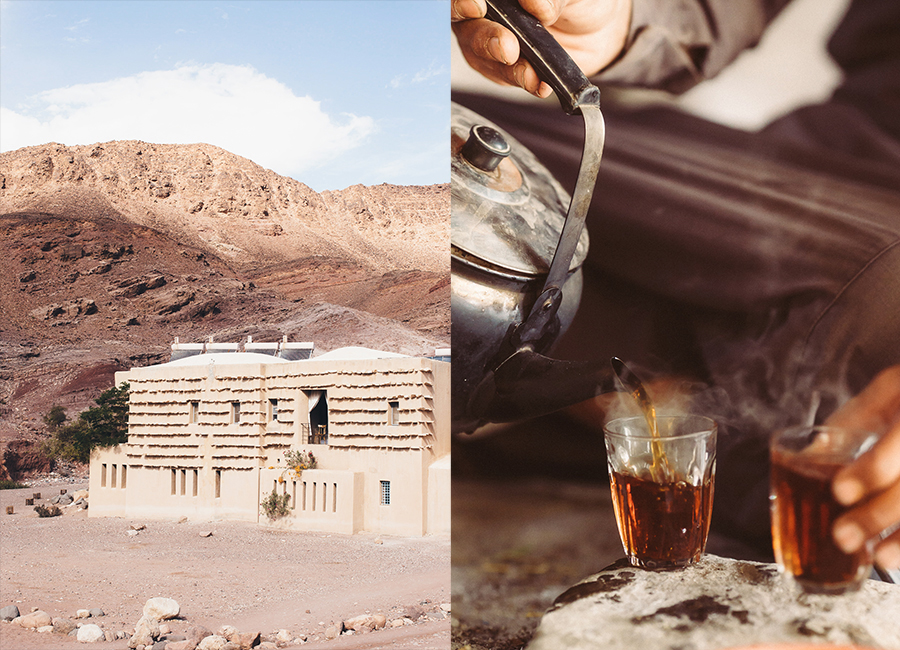
Dana Biosphere Reserve
“If you don’t like walking, you can do walking beside bicycles,” said our guide, almost maintaining a straight face as he pointed to pictures of happy, sweaty adventurers pushing their bikes through the rough terrain. This was part of our welcome to Feynan Ecolodge, a magical award-winning, truly off-the-grid accommodation in the Dana Biosphere Reserve.
Though it is easy to find a free hammock or tuck into the delicious vegetarian offerings, come here for the staggeringly long list of activities offered: adventures range in difficulty from relaxing sunset strolls, star-gazing on the rooftop and exploring copper mines to climbing and, yes, mountain biking over the rugged topography (strictly for those endowed with quadriceps stronger than my two toothpicks.)
Local guides can also arrange cooking lessons or – my favourite – a visit with a Bedouin family to prepare Arabic coffee over a campfire and sip sweet tea. These and other community-based experiences (like making kohl, baking bread, weaving or working with local shepherds) help connect guests to the area in lasting, informative ways.
Inspired by monasteries, famous Jordanian architect Ammar Khammash designed Feynan to emanate the ethos of a calm retreat. So, in that divine spirit, leave your cellphone in your bag (for travellers who can’t imagine disconnecting, rest easy, there is Wi-Fi … just not much and not everywhere) and pack a flashlight. Entirely solar-powered, Feynan is lit with candles at night, a dreamy, twinkling sight in itself.
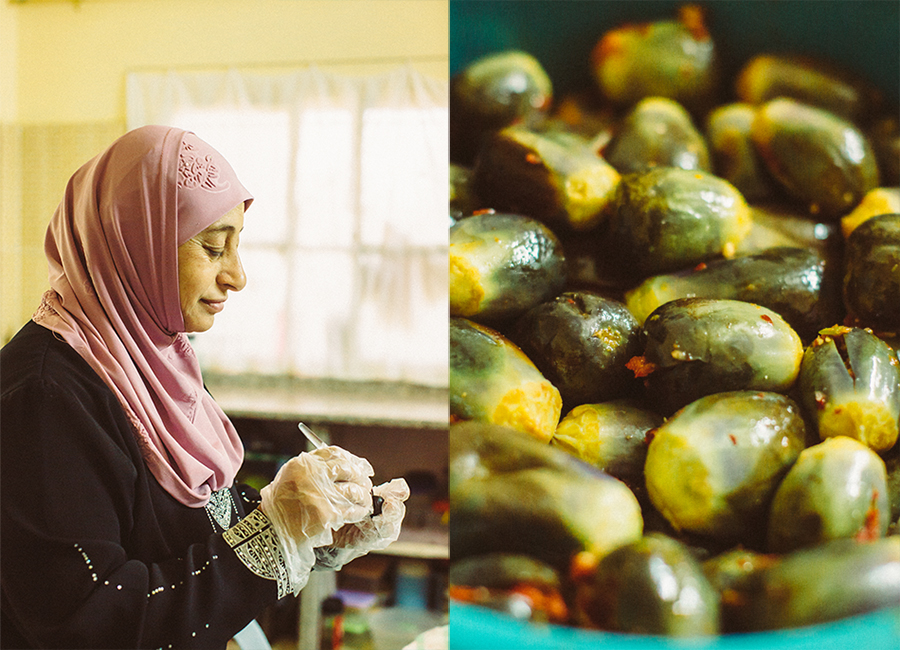
Umm Qais
While Fenyan gives visitors access to indigenous Bedouin communities, Beit Al Baraka (Arabic for House of Blessings) connects travellers with the villagers of Umm Qais. Use this charming, laid-back B&B as a base for unique and educational experiences from basket weaving and olive picking to cooking lessons to beekeeping.
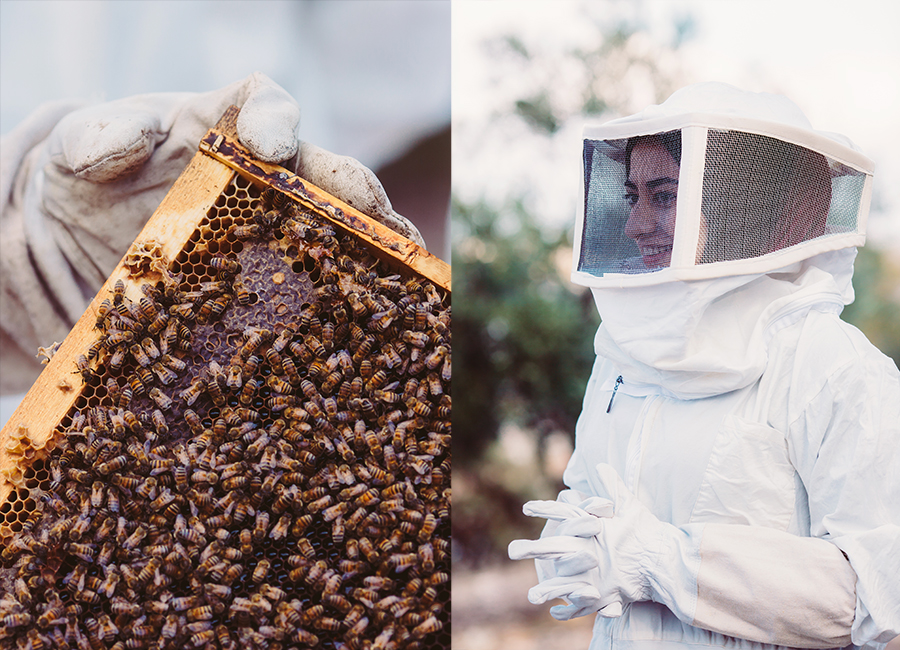
Plus, for outdoor adventurers seeking the Middle Eastern equivalent to Bill Bryson’s A Walk in the Woods or Cheryl Strayed’s Wild, the new 650-kilometre Jordan Trail is now open, and beginning the hike at Umm Qays gives you a blissfully downhill head-start.
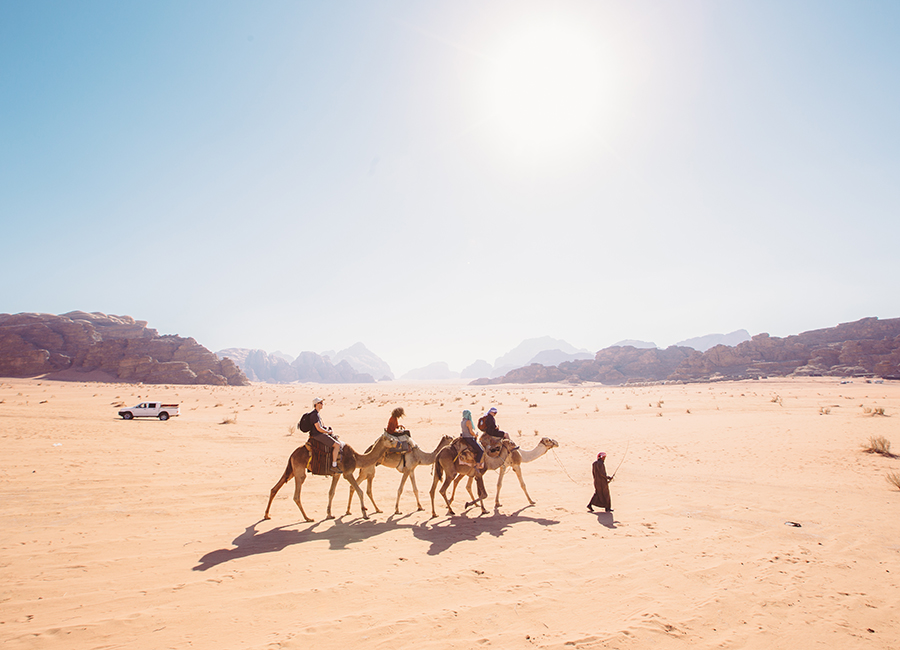
Wadi Rum
Cross a teeter-totter with a rocket launcher and you’ll have an idea of what it feels like to mount a camel. When they stand, they lurch forward, then, at just the point where you think you’ll be thrown over their head, they swing quickly through the midpoint and lean impossibly far back, much like a driver reaching for something on the rear seat. Then, just when you imagine you’ll be bucked off, they level out and push upward so quickly there might as well be a contrail.
If I’ve failed to sell how wonderful this is, that’s a tragedy because the languid pace of my camel trekking through Wadi Rum’s gorgeous red sands made me feel elated, flush with bonhomie and meditative all at once. Apart from touring the area with 4×4 Jeeps, it’s also considerably more comfortable. If you’re hiking or dune climbing, try following someone else’s footprints, you’ll spend less energy.
Stay overnight at Sun City Camp for a luxury experience that belies the arid and hostile climes of the desert. My tent’s elegantly curved shower, electric bed warmer and colourful, draped silk ceiling burst any hope of telling believable “roughing it” stories, but cosying up in bed once the sun goes down and the temperature drops made the trade worth it.
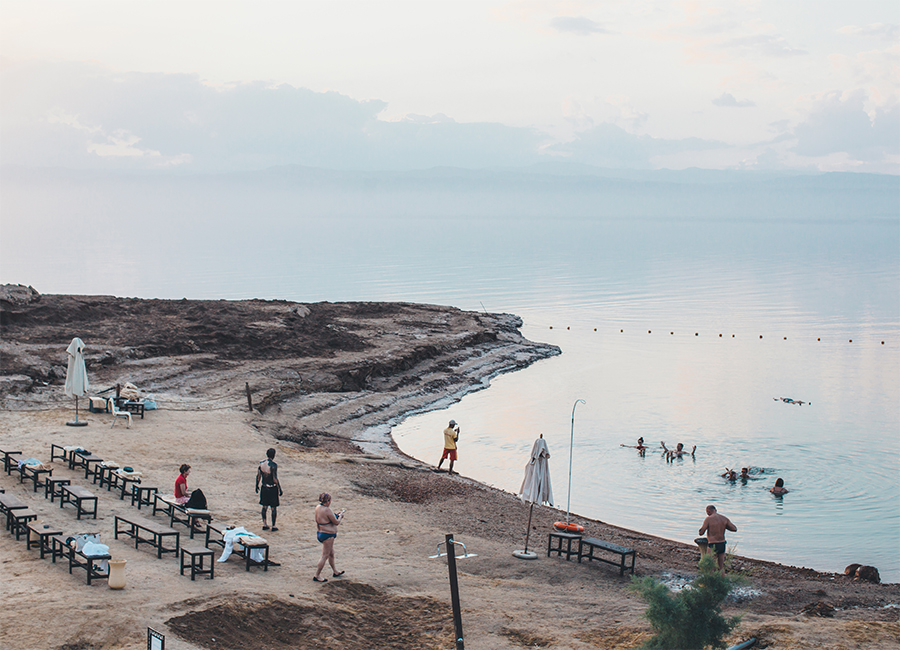
The Dead Sea
The Dead Sea is the closest I’ve ever come to the happy feeling of a wine cork bobbing in a bathtub.
Some tourists arrive with newspapers as props to create cutsey instagram-ready images showcasing the buoyancy of the salt water (in the style of “look ma, no hands”), but I was too busy trying to steer my now seemingly gravity-free body and contain my delighted laughter.
The Kempinski Hotel Ishtar has a secluded, private beach with a trained lifeguard and adept cellphone photo-taker (though the Dead Sea is not as threatening as the name implies, water safety is always important … as is not splashing your eyes). There are posted signs clarifying how to get the most therapeutic benefits from the lake, but simply, mud up by rubbing mineral-rich soil collected into urns on the beach over your exposed skin and then slide back into the water to rinse off once it has dried into a thin, crusty shell. Just don’t shave in the days leading up to your dip and be cautious of scratches; there’s nothing quite like 30-plus percent salinity to amplify your every nick and scrap into a near-mortal feeling wound.
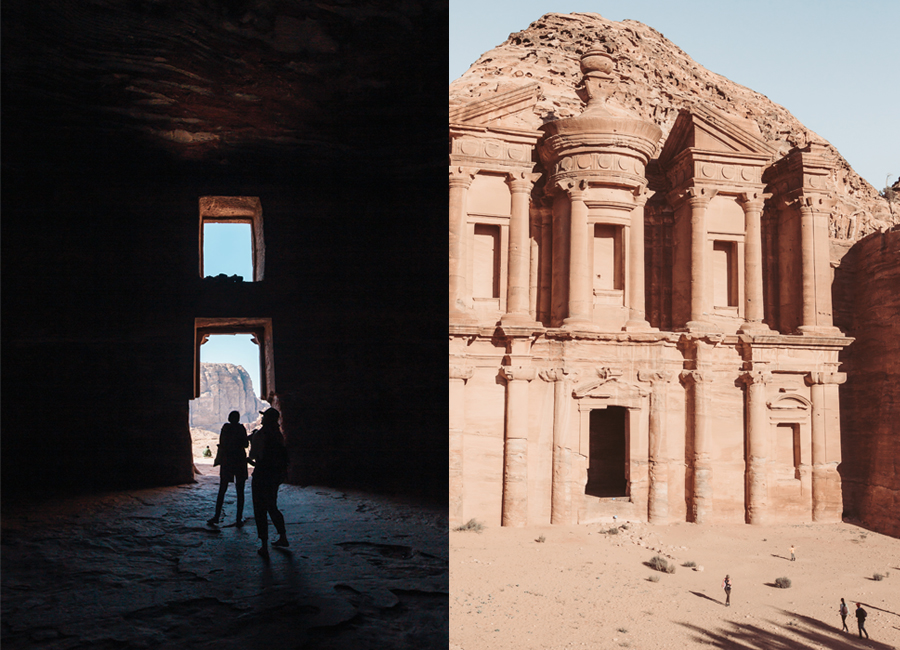
And … Petra
Walk through the main entrance, along the winding Siq path and there, through a growing gap in the towering sandstone canyons, you’ll see your first glimpse of the treasure … or Treasury, to be exact. Rose City, so dubbed because of the blush colour of the sandstone, is an enormous site of elaborately carved tombs, temples and sophisticated irrigation systems built by Nabataeans thousands of years ago. Rediscovered by Europeans in 1812 (and Sean Connery and Harrison Ford in 1989), declared a New Wonder of the World in 2007, the UNESCO World Heritage Center continues to astonish visitors and unearth new artifacts to this day.
Don’t let the 850 steps up to the monastery dissuade you – if necessary, ride one of the donkeys available at a small fee for an easy (though, I hear, somewhat unnerving) assent to the top or don sneakers and take it at your own pace.
However you get there, you’ll find that it’s not the climb but the view that winds you; the monastery’s imposing 148 feet-tall facade is the true hidden gem of the city.
Wadi Musa might be the most touristy you’ll get in all of Jordan, but the town provides easy access to the wonder. Stay at the extremely comfortable Mövenpick Resort Petra for the closest walk to the entrance of the park (located on – no kidding – Tourism Street). For a unique dining experience outside the hotel, try cooking your own authentic Jordanian meal at Petra Kitchen, where chefs oversee the preparation.
I left Jordan with a bounce in my step, a recipe for hummus stashed in my carry-on (I’d eaten so much over the trip, if I’d sustained a papercut while slipping it into the side pocket, it would have bled tahini ) and a vow to return.
IF YOU GO
Get around Jordan using public buses (note: they leave when full), private taxis or tourist buses. Accommodations will often assist with transport, so contact them first. Dress is conservative; an easy rule to follow is to keep knees and shoulders covered.
